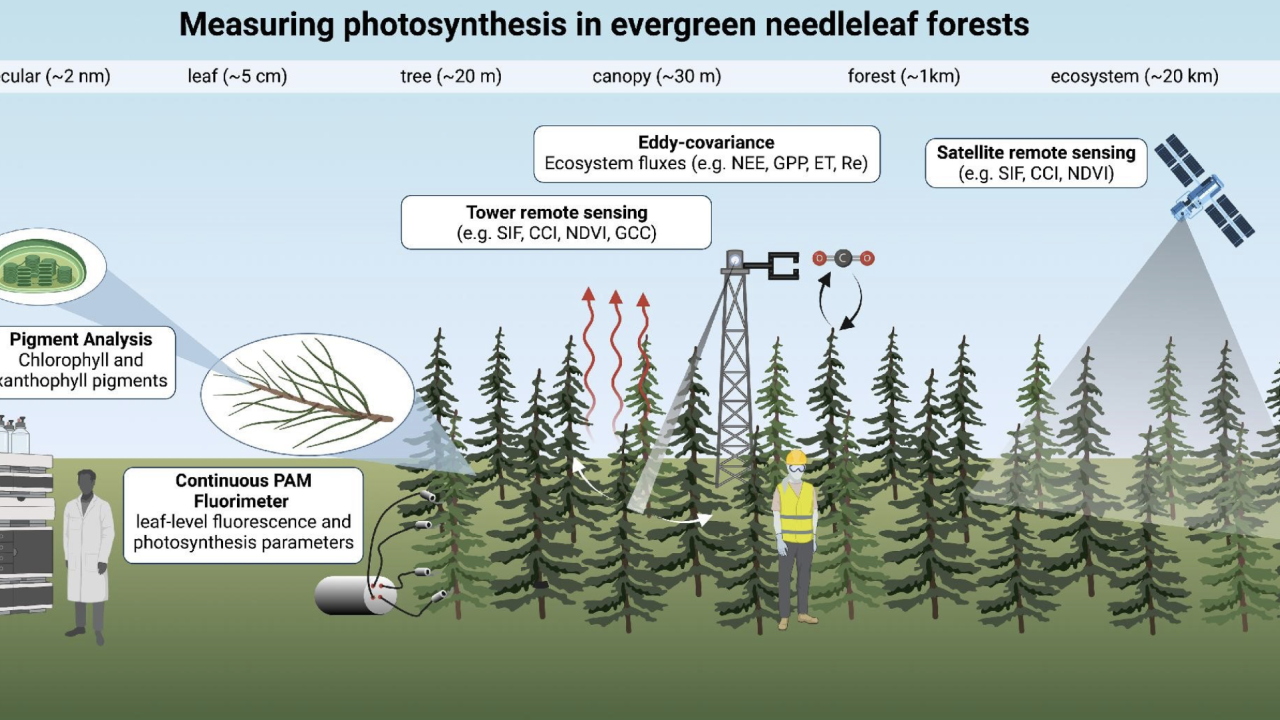
Synthesis paper on evergreen forest photosynthesis published in BioScience
Evergreen needleleaf forests (ENFs) play a sizable role in the global carbon cycle, but the biological and physical controls on ENF carbon cycle feedback loops are poorly understood and difficult to measure. To address this challenge, a growing appreciation for the stress physiology of photosynthesis has inspired emerging techniques designed to detect ENF photosynthetic activity with optical signals. This Overview summarizes how fundamental plant biological and biophysical processes control the fate of photons from leaf to globe, ultimately enabling remote estimates of ENF photosynthesis. We demonstrate this using data across four ENF sites spanning a broad range of environmental conditions and link leaf- and stand-scale observations of photosynthesis (i.e., needle biochemistry and flux towers) with tower- and satellite-based remote sensing. The multidisciplinary nature of this work can serve as a model for the coordination and integration of observations made at multiple scales.
Citation:
Zoe Amie Pierrat, Troy S Magney, Rui Cheng, Andrew J Maguire, Christopher Y S Wong, Magali F Nehemy, Mukund Rao, Sara E Nelson, Anneka F Williams, Jeremy A Hoyne Grosvenor, Kenneth R Smith, Jaret S Reblin, Jochen Stutz, Andrew D Richardson, Barry A Logan, David R Bowling, The biological basis for using optical signals to track evergreen needleleaf photosynthesis, BioScience, 2024;, biad116, https://doi.org/10.1093/biosci/biad116